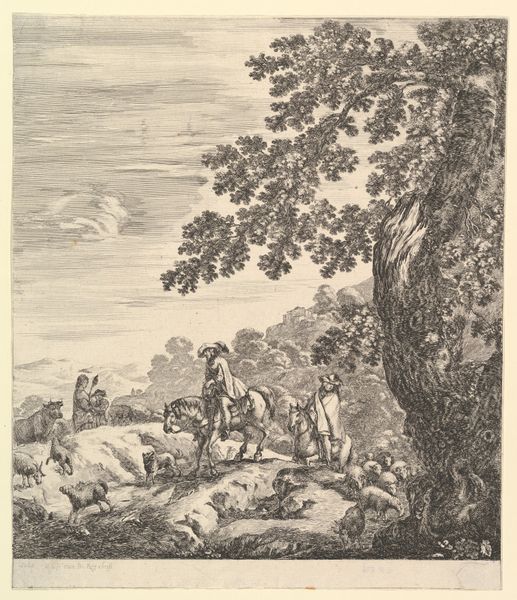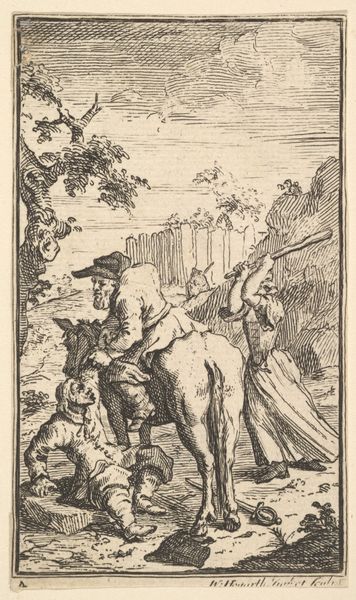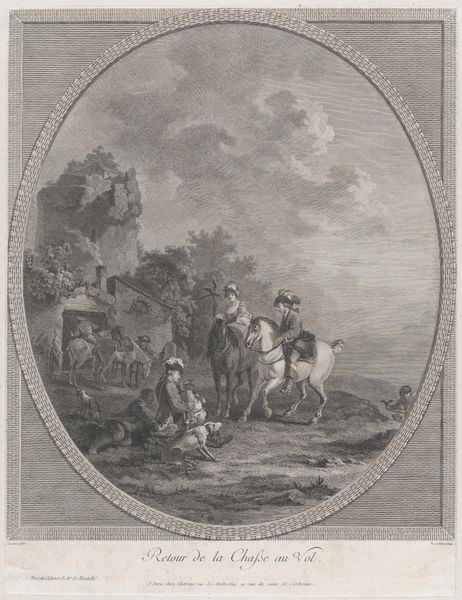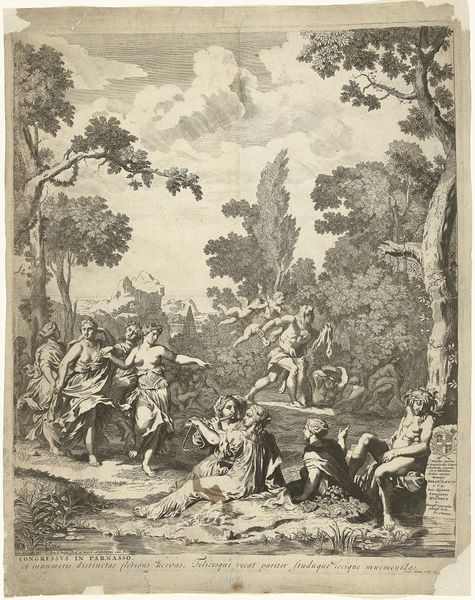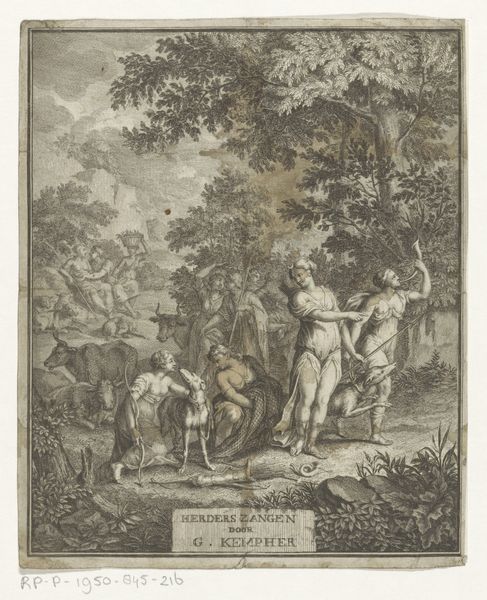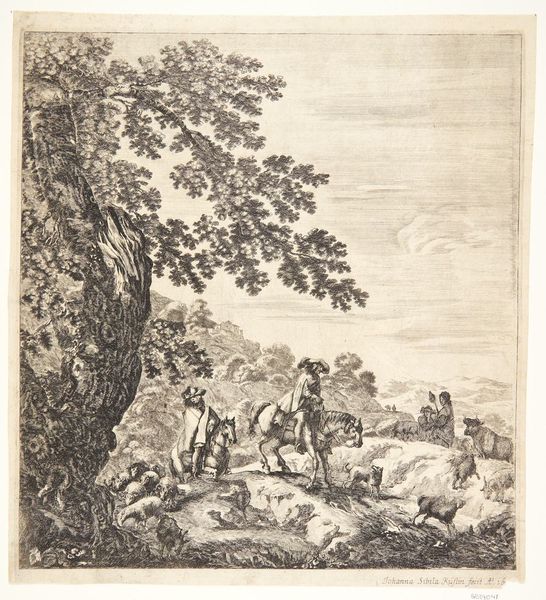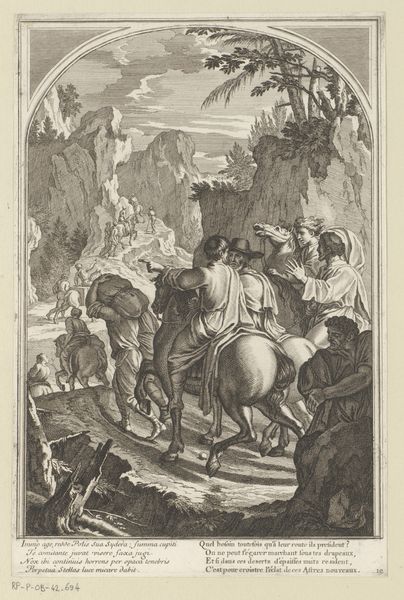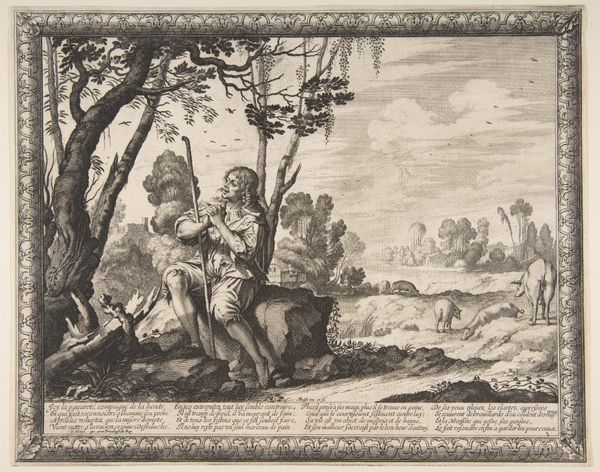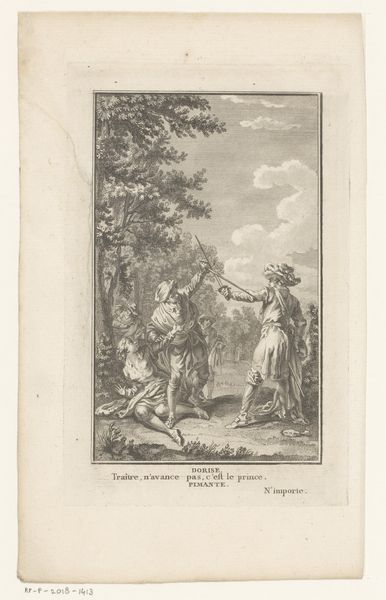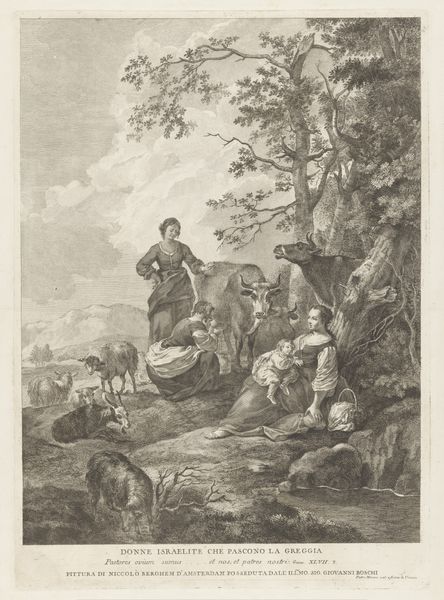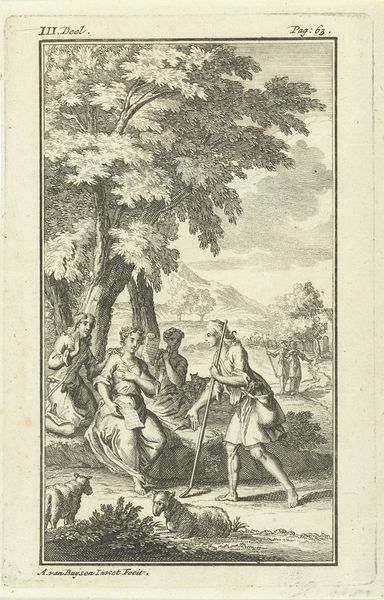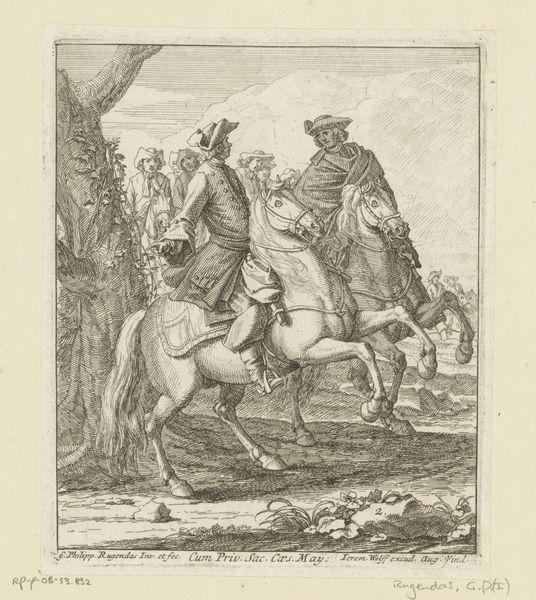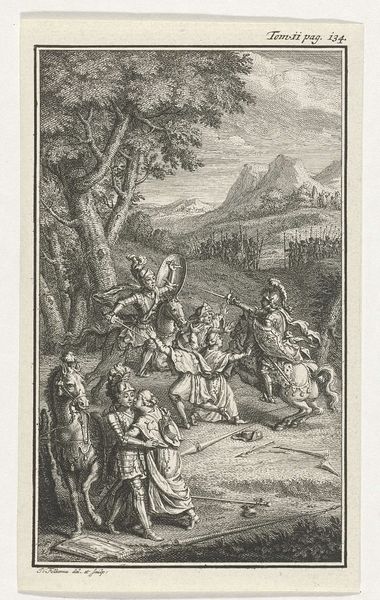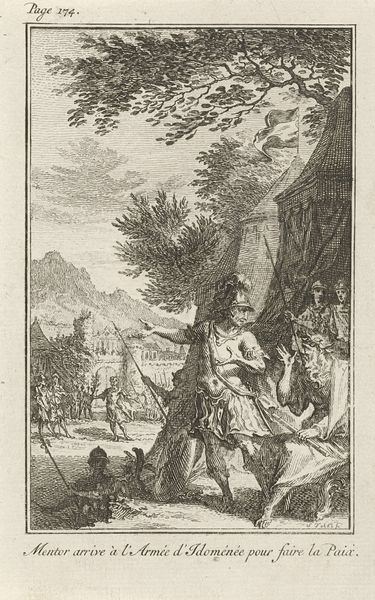
Illustration from "L'Ariane" by Desmarets de Saint-Sorlin; Palamede on Horseback Confronts His Enemies while Searching for Epicharis 1639
0:00
0:00
drawing, print, etching
#
tree
#
drawing
#
baroque
# print
#
etching
#
landscape
#
figuration
#
horse
#
men
#
history-painting
Dimensions: Sheet (trimmed): 7 9/16 × 5 13/16 in. (19.2 × 14.8 cm)
Copyright: Public Domain
Editor: We're looking at Abraham Bosse's "Illustration from 'L'Ariane' by Desmarets de Saint-Sorlin; Palamede on Horseback Confronts His Enemies while Searching for Epicharis," made in 1639. It's an etching, full of really tiny details. It feels theatrical, almost staged, despite depicting a chaotic battle. What can you tell me about its context? Curator: Well, it's vital to understand Bosse operated within a very specific socio-political landscape. The French court was the epicentre of power, and art often served to legitimize that power through narratives, just as in L'Ariane. The question is, what is this chaotic scene trying to say about the court and its values? Editor: It looks like an old history painting… Curator: Yes, but who was consuming images like this? Prints made art accessible. Think about the burgeoning merchant class; how might an image valorizing military prowess and the search for a virtuous woman speak to their aspirations for social mobility and refinement? Editor: I see. So it's not just a straightforward battle scene, it reflects societal ambitions. What is your read on that element in the artwork? Curator: Absolutely! Bosse cleverly uses linear perspective to draw the eye to Palamede. But what are the gender dynamics at play? We have women huddled to the side, while Palamede embodies the heroic ideal. Does this reflect or critique the contemporary views on gender roles? These prints also circulated internationally, so think of how this projection of French power, even through fictional narratives, might have influenced foreign perceptions. Editor: It's fascinating how one image can hold so many layers! I hadn’t thought about how prints themselves shaped public opinion. Curator: Precisely. Studying Bosse reminds us that art doesn’t exist in a vacuum; it’s actively shaping and being shaped by the world around it. Editor: I'll definitely look at prints differently now. Thanks!
Comments
No comments
Be the first to comment and join the conversation on the ultimate creative platform.
